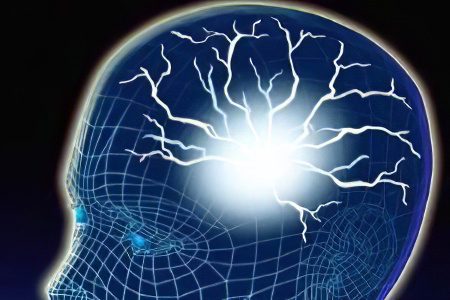Contents
What is alcoholic epilepsy?
Alcoholic epilepsy – This is a serious illness that occurs in people against the background of alcohol abuse. In other words, this disease is the result of alcoholism.
If we turn to statistics, we can draw the following conclusion: in most cases, alcoholic epilepsy affects people who abuse alcohol between the ages of 30 and 50, and those who are often addicted to alcohol substitutes are especially susceptible to it.
Of all patients with seizures treated in medical institutions, one third are people suffering from alcohol dependence.
Symptoms of alcoholic epilepsy

Alcoholic epilepsy is similar in its symptoms to conventional epilepsy. The very first signs of the disease can manifest themselves in the form of pulling or squeezing pain in the muscles. Usually they appear after a long period during which a person constantly takes alcohol, that is, after binges.
Often, the patient experiences the so-called absences – these are states of fainting or temporary clouding of consciousness, in which a person’s speech and movements freeze.
When a patient has a seizure, the following symptoms may occur:
He loses consciousness
Muscle cramps appear
The face turns white, and then the skin around the mouth turns blue
Eyes roll back
White foam comes out of the mouth
Vomiting
Inability to control movements
Psychomotor seizures that characterize alcoholic epilepsy can manifest themselves as follows: the patient begins to spin, take off his clothes, touch himself in different places. Performing all these movements, a person is practically not aware of them, and when the attack ends, the patient may not remember anything.
If we talk about convulsive attacks that accompany alcoholic epilepsy, then many patients can anticipate them. Before that, they feel changes in their well-being and behavior – for example, some begin to eat or drink a lot, some become cold or hot. Sometimes the patient may experience auditory hallucinations.
Convulsions in most cases last no more than three minutes, after which the patient calms down and can even fall asleep, as he feels weak. It also happens that the patient has several attacks at once, which occur one after the other. This condition is called status epilepticus.
The seizures that occur with alcoholic epilepsy can have serious, dangerous consequences for the patient. First of all, a person can suffer during a fall – blows on objects surrounding him, as well as on the floor with his head, are possible. Vomit masses that can enter the respiratory tract can also be unsafe, as a result of which suffocation can occur.
Some features of alcoholic epilepsy
It is important to note here, first of all, that if a person suffering from chronic alcoholism has a convulsive seizure at least once, then it can be said with certainty that it will happen again. It is difficult to predict exactly when this will happen, and how often seizures will occur in the future.
Seizures usually occur on the second, third or fourth day after a person stops drinking alcohol – during the hangover period. Patients suffering from chronic alcoholism are not recommended to climb heights or drive vehicles, because their attacks begin suddenly.
Reasons why alcoholic epilepsy develops

Physicians, based on the results of numerous studies and observations, came to the conclusion that alcoholic epilepsy develops mainly in those people who already have a predisposition to epilepsy. Under the influence of toxic substances contained in the breakdown products of alcohol, the disease develops and becomes apparent.
Nevertheless, the main cause of alcoholic epilepsy is long-term use of alcohol, namely, poisoning with it, which continues for a long time. The development of this disease can also be caused by factors such as traumatic brain injury, and even atherosclerosis.
Seizures in alcoholics can also occur for other reasons:
Various kinds of infections – for example, meningitis, etc.
brain tumors
Diagnosis of alcoholic epilepsy
The diagnosis of “alcoholic epilepsy” is made on the basis of the symptoms characteristic of this disease, but it is the alcoholic form of epilepsy that is detected in the presence of tonic convulsions with prolonged muscle tension, which most often appear during withdrawal. Of course, the patient is asked if he had previously, even before he became an alcoholic, similar conditions.
Diagnosis of the disease is also carried out with the help of specialized equipment. For example, computed tomography, MRI, electroencephalography are often performed.
Treatment of alcoholic epilepsy
There is no specific treatment for a disease such as alcoholic epilepsy. The only measure is to control seizures with medication, but in severe cases surgery is indicated. Usually patients are prescribed anticonvulsants used in the treatment of the usual form of epilepsy.
Since alcoholic epilepsy develops due to dependence on alcoholic beverages, the main measure in its treatment is the rejection of alcohol. The success of the treatment here depends not so much on the doctor, but on the patient himself – it is important that he is fully aware of the seriousness of the disease and makes a firm decision to undergo treatment. And you need to start it as soon as possible – if there was a first attack, you can not leave everything as it is.
Alcoholic epilepsy does not go away on its own, self-healing is impossible. If the patient refuses to be treated, then in the future, constant intoxication of the brain with alcohol and its decay products will lead to serious and irreversible changes in the body.









